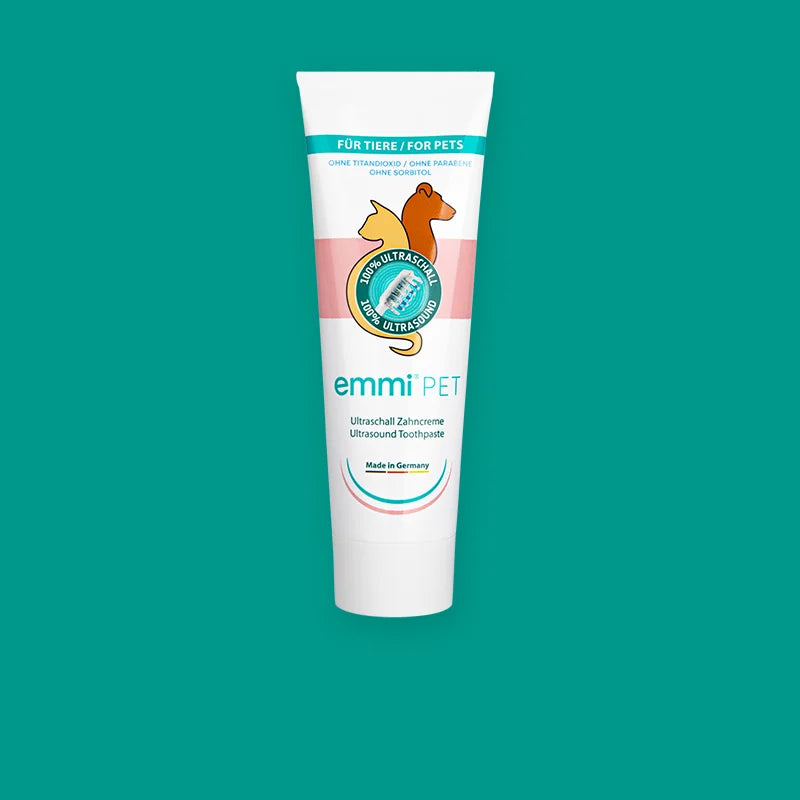Parasites in dogs: mites
Types, symptoms, causes, treatment and prevention!
Mite infestation in dogs is a common problem. Mites are among the most stubborn parasites and are not easy to remove. Due to the diversity of their species, the symptoms also vary. In today's blog post, we explain how to recognize mite infestation in your dog and how to prevent it.
Detect mite infestation in dogs
Recognize symptoms that indicate mite infestation early!
If your dog suddenly starts scratching excessively or you notice bald patches in his fur , you should definitely investigate the cause. If mites are the trigger, it can lead to serious health problems. A visit to the vet and treatment of the mite problem as quickly as possible are essential.
You can check whether your pet is suffering from a mite infestation by combing its fur with a very fine flea brush. Tap the comb on a white cloth. If there are any traces of mite larvae, whole larvae, or eggs , your dog is infested with mites. If you don't see any infestation, conduct a second test with a wet cloth. If brown spots appear when rubbing with a wet cloth, this could be an indication of mite feces. Also check your pet's skin for inflammation or redness. You should also check its ears. Bleeding and crusting can also be signs of a mite infestation.
The different types of mites in dogs
Recognize the differences between different mite species!
Depending on the species, the symptoms of a mite infestation can vary. Some mite species can also be transmitted from dogs to humans. Symptoms range from itching to papules or vesicles. The most common mite species include:
- Grass mites , which wait for their host in the wild. They feel most comfortable in dry grasses and plants, ideally in the shade. This mite species lurks in groups and often clings to the tips of plants. If the host is in close proximity, grass mites attach themselves to the fur. This species causes skin inflammation with intense itching. This mite species prefers to congregate on the paws or abdomen.
- Hair follicle mites, also known as Demodex mites, are transmitted to dogs at birth. Demodicosis is divided into localized demodicosis and generalized demodicosis. Both forms require veterinary treatment.
- Scabies mites are divided into two groups: burrowing mites and Cheyletiella mites. Both species are considered contagious and can cause scabies. The dangerous thing about this mite species is that they burrow beneath the first layer of skin and lay eggs in their burrowing channels. Their movement under the skin and their excretions lead to itching and inflammation. Scales, pustules, and small nodules under the skin can provide initial evidence of this mite species.
- Ear mites are considered relatives of mange mites. The first indication of infestation is constant head shaking and persistent ear scratching. Ear mites feed on skin cells, blood, and tissue fluid.
- Food mites prefer to settle in dry food stores. Open storage of food stores attracts these little pests.
Preventing mite infestation in dogs
A healthy and balanced diet strengthens the immune system!
A strong immune system is the best remedy against mite infestation. A healthy and balanced diet is essential for this reason. Exercise is also important for your dog. This will keep your dog's skin healthy for a long time. Regular coat checks and grooming should also be incorporated into your daily routine. This makes mite infestation not only very easy to detect but also relatively quick to treat. You can treat skin inflammation with our emmi-pet skin and dental care set, in addition to veterinary treatment. While mite infestation certainly cannot be prevented, the risk can be significantly reduced by taking the measures mentioned.


















